Recollections of the Past 30 years pursuing Coelacanths
Jerome Hamlin, creator dinofish.com
SoPac IV, got off in 2013, and involved a trip without special underwater gear, that compensated with a sweep through a string of "uninvestigated" Pacific Islands, and a trip across the top of New Guinea into the western half of the island under Indonesian control. I carried a new Canon, the 5D MarkIII, and a new Sony, the remarkable RX-1. With us as well, were our fish I.D. documents and model. I had concluded the Seaviewer would be too much to contend with on a trip with so many national destinations.
There had once been a report of a coelacanth seen on the docks at Tahiti. I asumed this to be a frozen one brought in from elsewhere, probably the Comoros, as Comoros and Tahiti were both French ports of call. (Comoros had become largely independent of France in 1975, but still relied heavily on French aid.) Tahiti has a sophisticated French and indigenous population where the presence of coelacanths would not go unnoticed for long. Our interview with a local marine biologist seemed to back up this assumption.
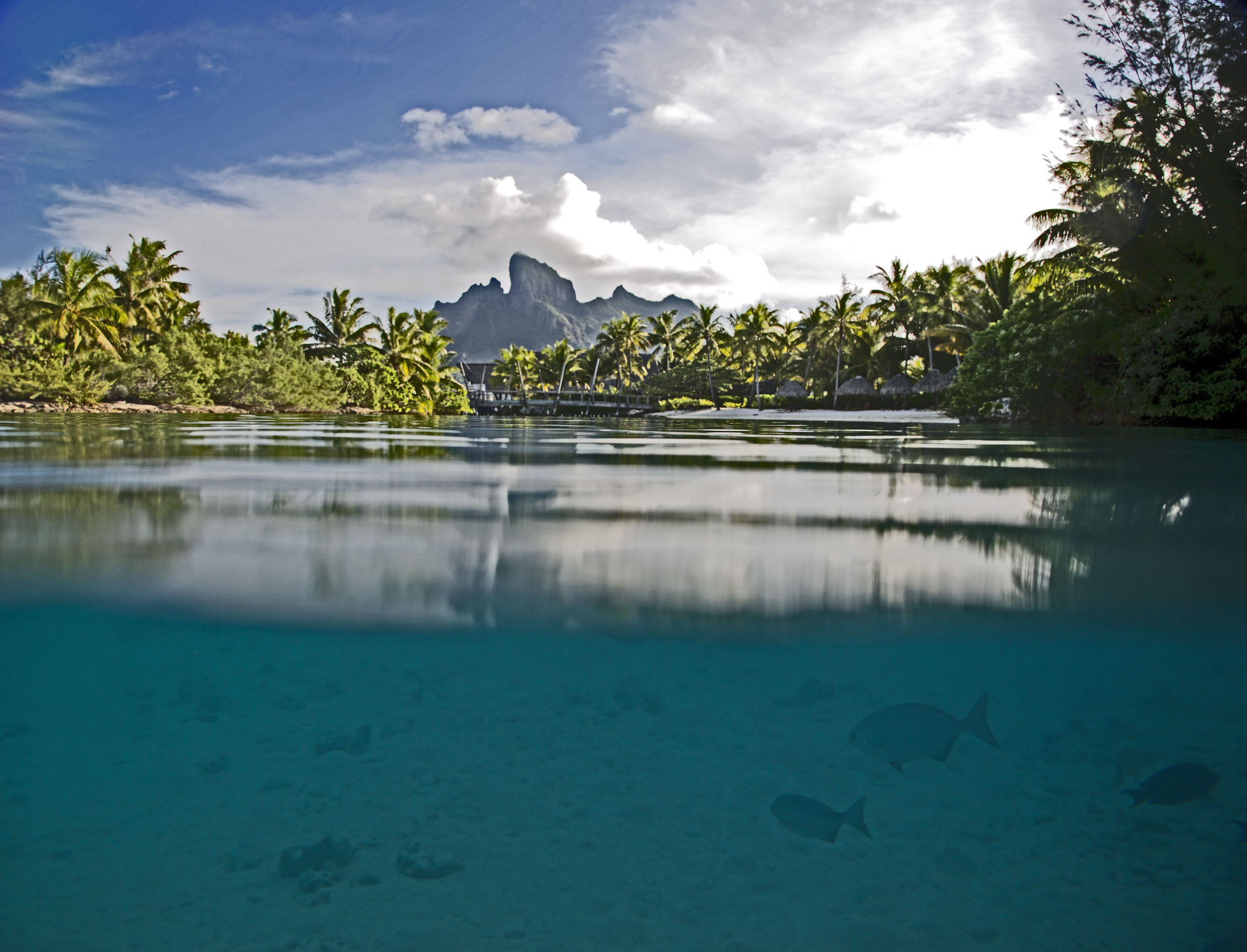
Bora Bora, Tahiti
New Caledonia, our second stop, was the same story. A sophisticated French presence alongside a culturally erradicated indigenous population of Kanak people. Noumea had parks, street cars, shopping plazas, cultural museums, pet shops, and a modern aquarium with an interesing history. Any coelacanths turning up here would be soon identified for what they were. It reminded me of Reunion where I had driven to the furtherest part of the island and a street vendor knew what the fish was and where it was from (although he said Madagascar, when Comoros would have been more to the point.)
Vanuatu, our third stop was something of a different story, particularly in the south where we visited the volcano Yasur on the island of Tanna. There were still healthy indigenous communities with rich cultural traditions, including artisinal fishermen. We did not get positive I.D's but I made an effort to visit the director of fisheries in a small town down there and leave the necessary contact information. He said he would keep an eye out.
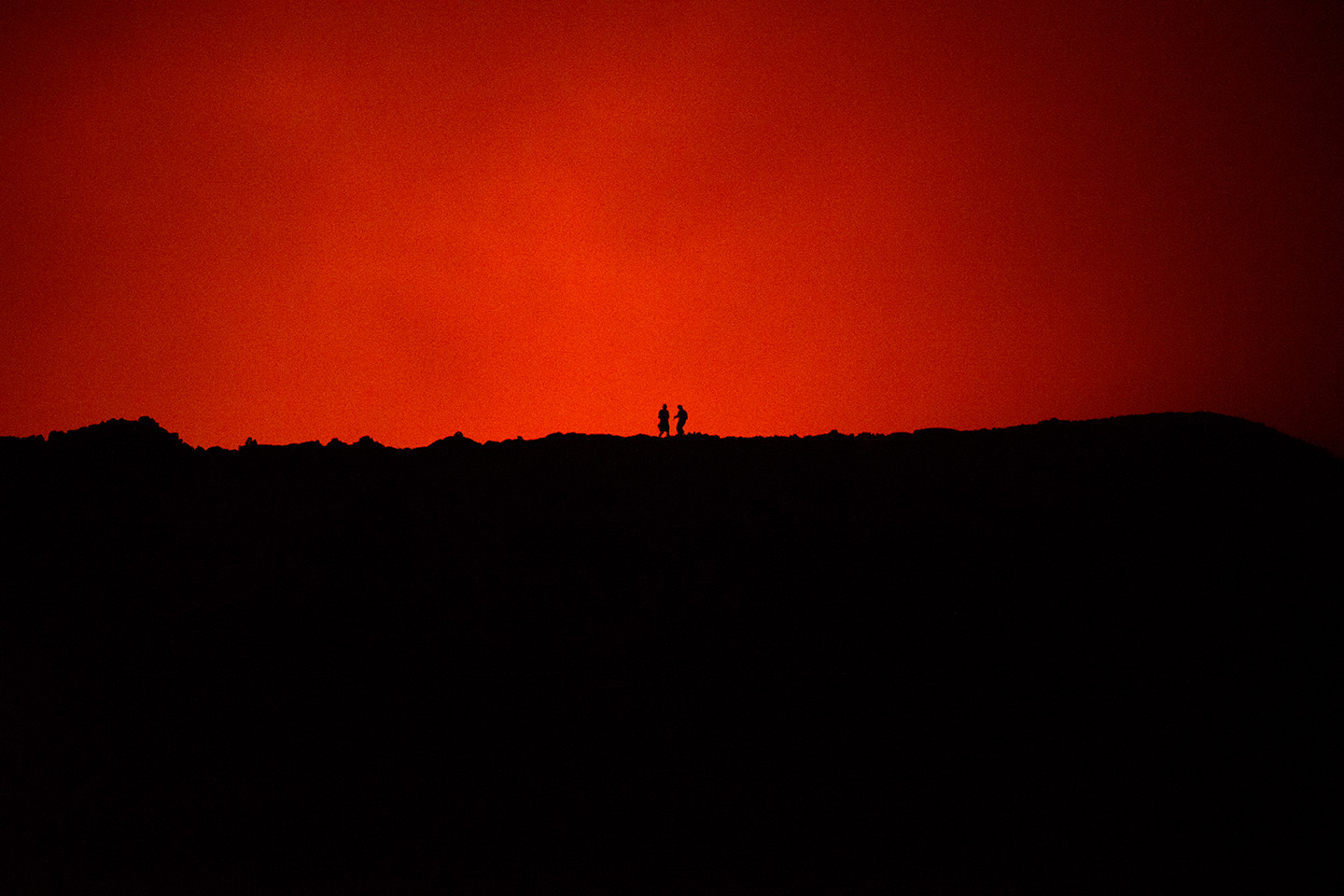
Rim glow from Yasur Volcano
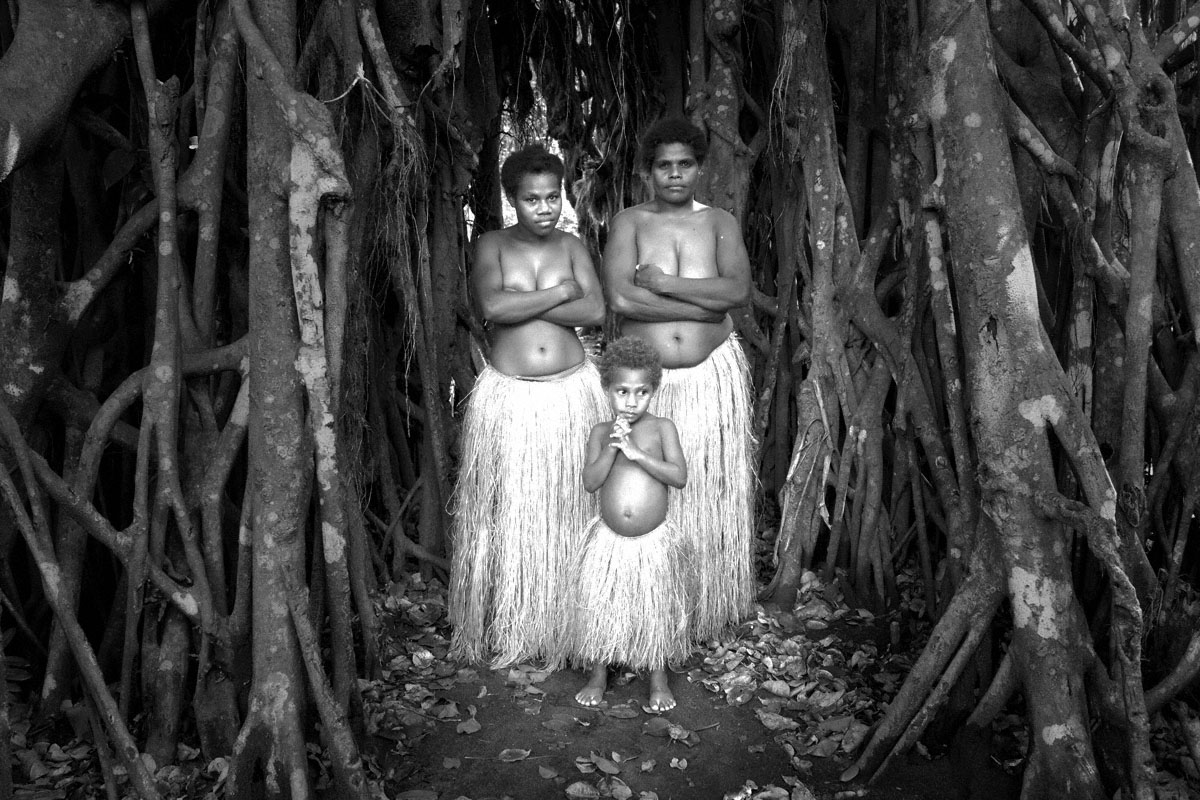
Kastom Dancers in Tanna, Vanuatu
The jump from Vanuatu was back up to Port Morseby, PNG, and then over the hump to Wewak again.This time we hired a car and did the complicated ride west to Vanimo for an overnight. There we did interviews for the first time, but without positive results. Then across the unfriendly border between Papua New Guinea and Indonesian Papua, formerly known as Irian Jaya. The drive eventually reaches the modern city of Jayapura. Now we were in a country repopulated by Indonesians, with the indigenous population seemingly in a secondary role- reminding me of the Chinese infiltration of Tibet. But this is the jump off point, where you get the permits, for Wamena in the Baliem Valley, and the southern very wild coast of the Asmat. We flew in what was more like a flying bus, where you lined up and boarded sitting wherever you could, on the daily flight to Wamena.
Wamena and the trip south from there obviously had little to do with coelacanths until we would reach the Asmat towns on the coast. But Wamena was an eyeopener and the object of many adventuring travellers. This was the area first discovered during WWII when a C47 (DC3) full of sightseeing service men and women crashed on the side of the valley, leaving the survivors to live among the uncontacted Dani tribe for several weeks until rescued by boarding a glider that was dropped and then snagged by a pick up plane. Later an airstrip was laid in the valley and interactions with the outside world developed. But now in 2013, there were still vestiges of original Dani life. A Dani on a motorscooter wearing a helmet would pass on the road another older Dani naked except for a penis sheath. A woman in a T shirt next to one with bare breasts. One village reenacted tribal warfare and conducted a ritual pig feast. Another produced a skeletal mummy. Curiosities for the curious. We took it all in.

A traditional Dani on the road outside Wamena
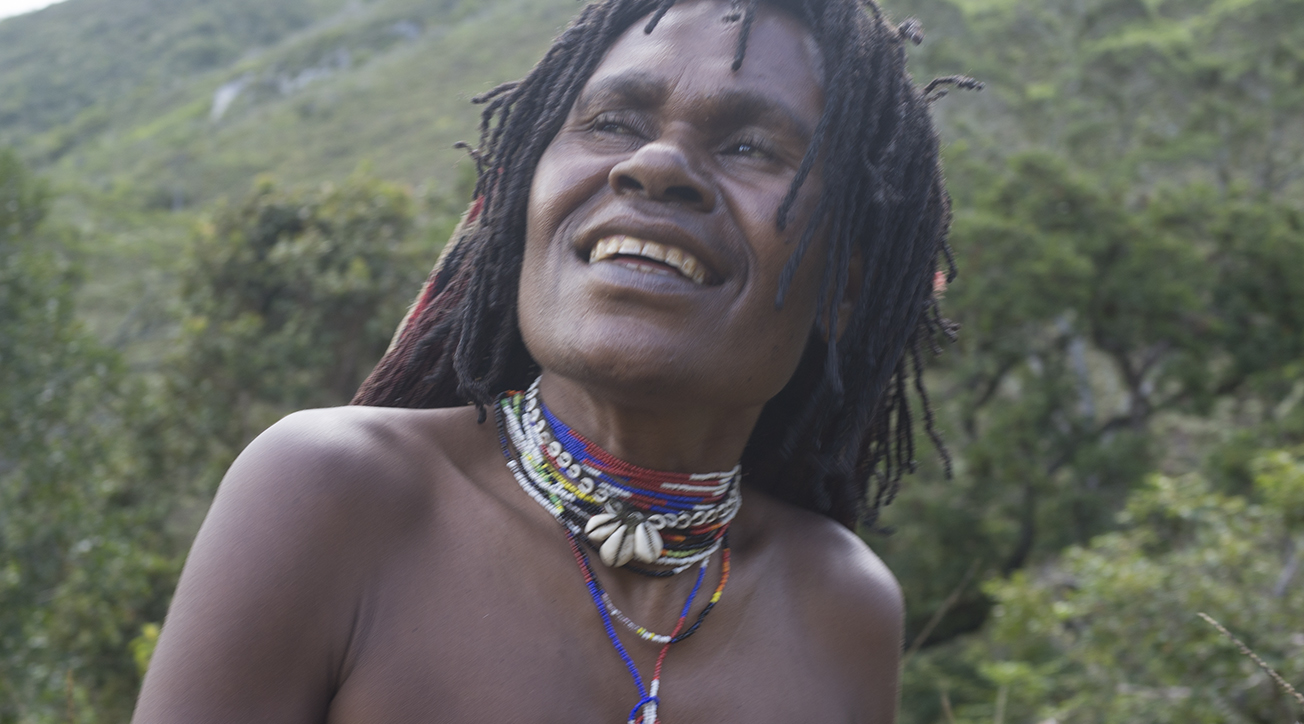 Traditional Dani woman
Traditional Dani woman
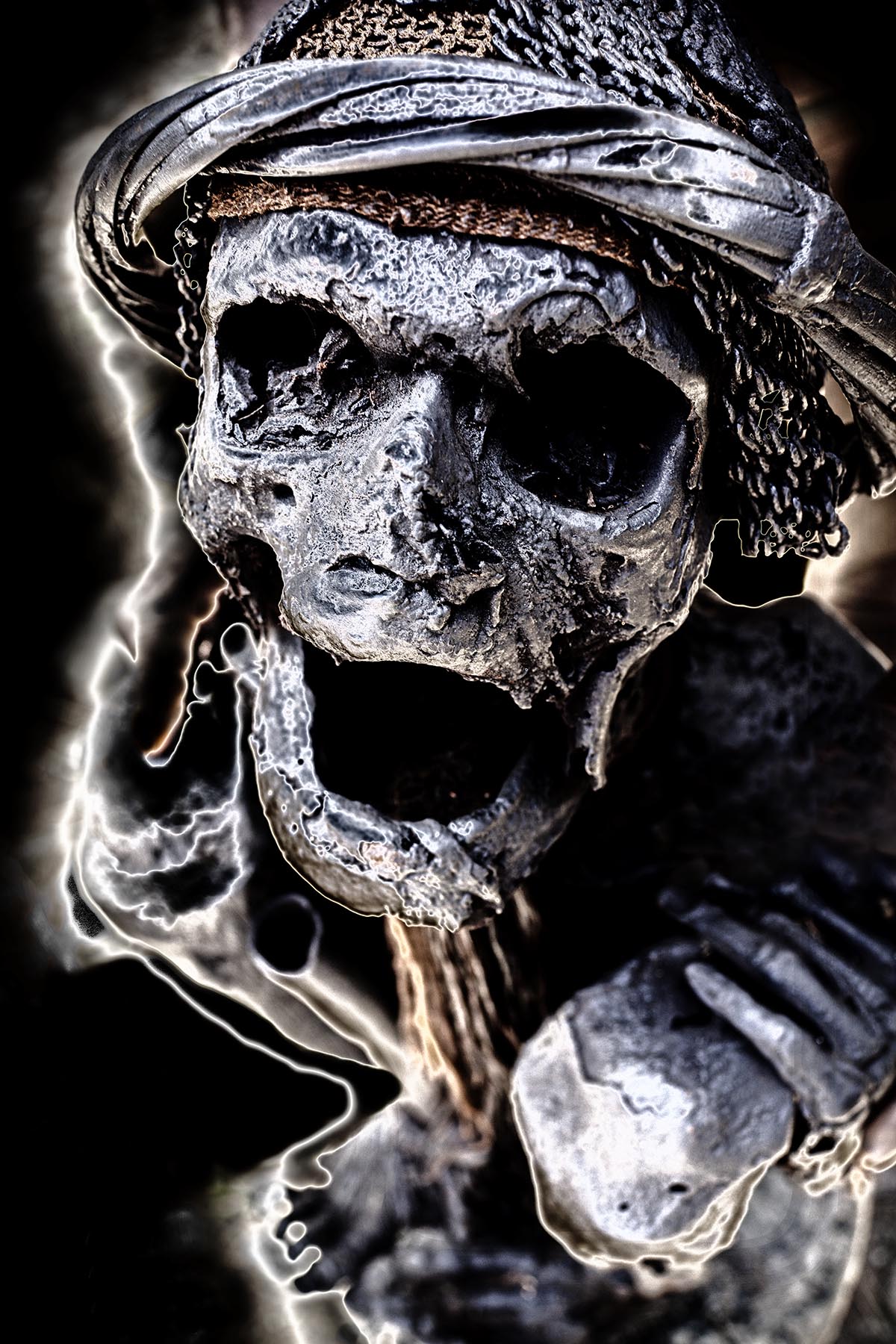
The Wamena mummy (stylized)
Nothing would top Wamena for being out of the ordinary until our next stop. At Wamena we had met a guide named Yessaya who agreed to escort us on the difficult trip down the river to and through the Asmat. It began with another flight to a jungle town a few hundred miles south of Wamena and out of the highlands. From here he arranged a boat and driver who brought his son along with camping supplies and food. We left, camping on the banks, as we headed south. A day or two in we pulled over midday and were told to get out. Our luggage was put on the shore a well. Then we began to march inland under a searing sun, until we found ourselves struggling through swamps overhung with trees, swarms of mosquitoes surrounding our bare legs. (Back home we would both come down with malaria requiring hospitalization. I traced it back to this swamp incident when we were caught by surprise by mosquitoes in daytime.) I was quickly losing interest in the adventure when suddenly a young man appeared who was completely naked with only a thin green leaf wrapped round the tip of his penis. He was friendly and greeted us a he passed by.
That was our introduction to the Korowai, one of the few stone age cultures still living on the planet. They are famous for their treehouses, but we would eventually reach a village in a modest clearing, where they were expecting us. The first naked man returned carrying some of our gear. And the village which seemed to be an extended family living in a couple of huts greeted us happily offering up individuals for sex which we politely declined trying not to hurt any feelings. Flies were the mainstay in the village until evening, when the mosquitoes were back. We set up our sleeeping bags inside our mosquito nets. By candlelight, the villagers smoked and talked in loud voices all night within feet of us. The next day they went about their chores including making sago and bringing us to their tree house. I had the impression that they did a good bit of this for our benefit, that they had a routine they did for visitors. They also seemed to have some contact with a clearing a mile or two away set up by the Indonesian government. It contained rows of metal shacks and there were Korawai living there when we visited. Nonetheles, this was about as close to a stone age existence, that one can experience in the 21st Century. Seriously overheated, I cooled down in a spring they used for swimming and water supply. When we left, most of the village followed us on the trail to the river, some carrying our gear. They waved us off from the shore.

Korowai at night by candlelight (Sony RX-1.)
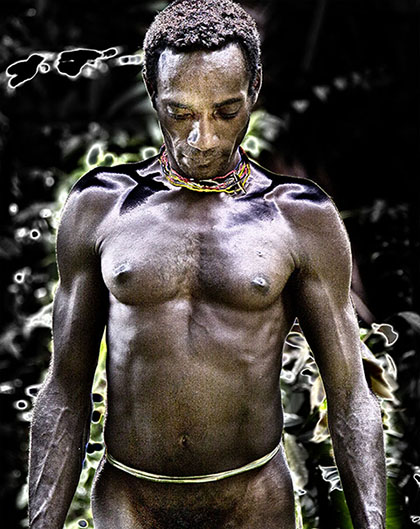
Korowai man (stylized)

The Sungai Brassi now caried us down into the region known as the Asmat. We camped on the shore or in abandoned huts, or inside longhouses that were filled with Asmat families. This region was less primitive than I expected. People wore western casual dress- T shirts and old blue jeans and shorts. Generator racket filled the evenings. A longhouse might have a TV near the fire pit. Bits and pieces of chainsaws here and there.

But again there was a traditional performance for us, although it was hard to know what was happening due to so little English being spoken by our guide from Wamena. Basically, a group of men appeared in a longhouse in traditional wear and covered in ash. We followed them as they canoed some distance away. They chopped down a tree with simple axes, towed it to the water with vines and poled it back to the village.This had been the technique for building longhouses and carving bis poles.


Asmat Smoker
Almost everyone smoked cigarettes, as opposed to chewing beetle nut as on the other side of New Guinea. We aquired a canoe full of artifacts and were presented with the challenge of a short sea crossing to the coast town of Agats- exactly the fate that befell Michael Rockefeller in Novmber, 1961. I didn't want a repetition and so was greatly relieved when our guide said that at this time of year the water was high and we could go by inland waterways.
Agats was something like a frontier town during a gold rush era. Transient workers sat by the warfs, mainly indigenous people, while Indonesians ran the shops and few hotels. Raised wooden walkways, above the swampy tidal areas, constituted the sidewalks here and in the other Asmat towns we visited. There was no evidence of artisinal ocean fishing and no recognition of coelacanths.
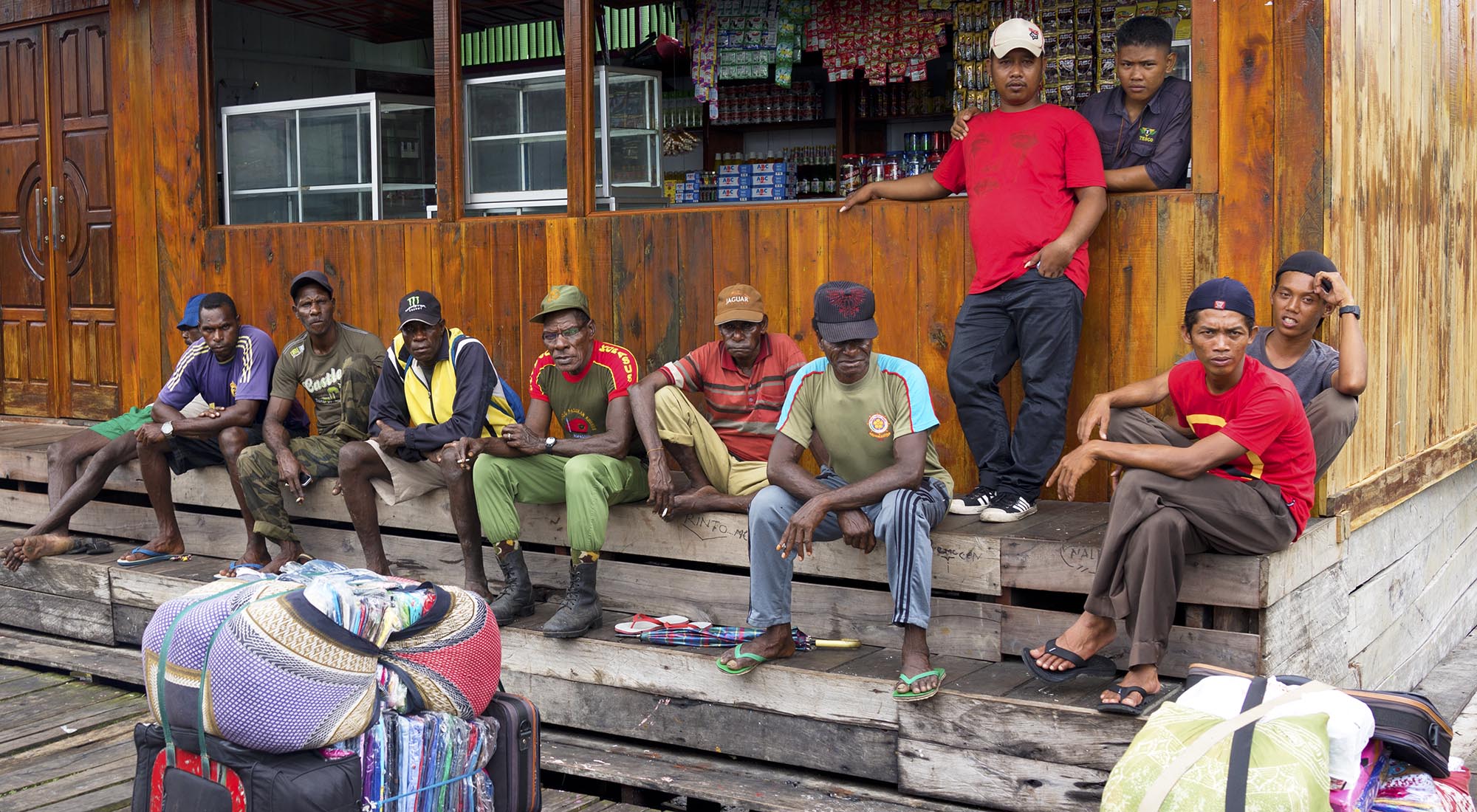
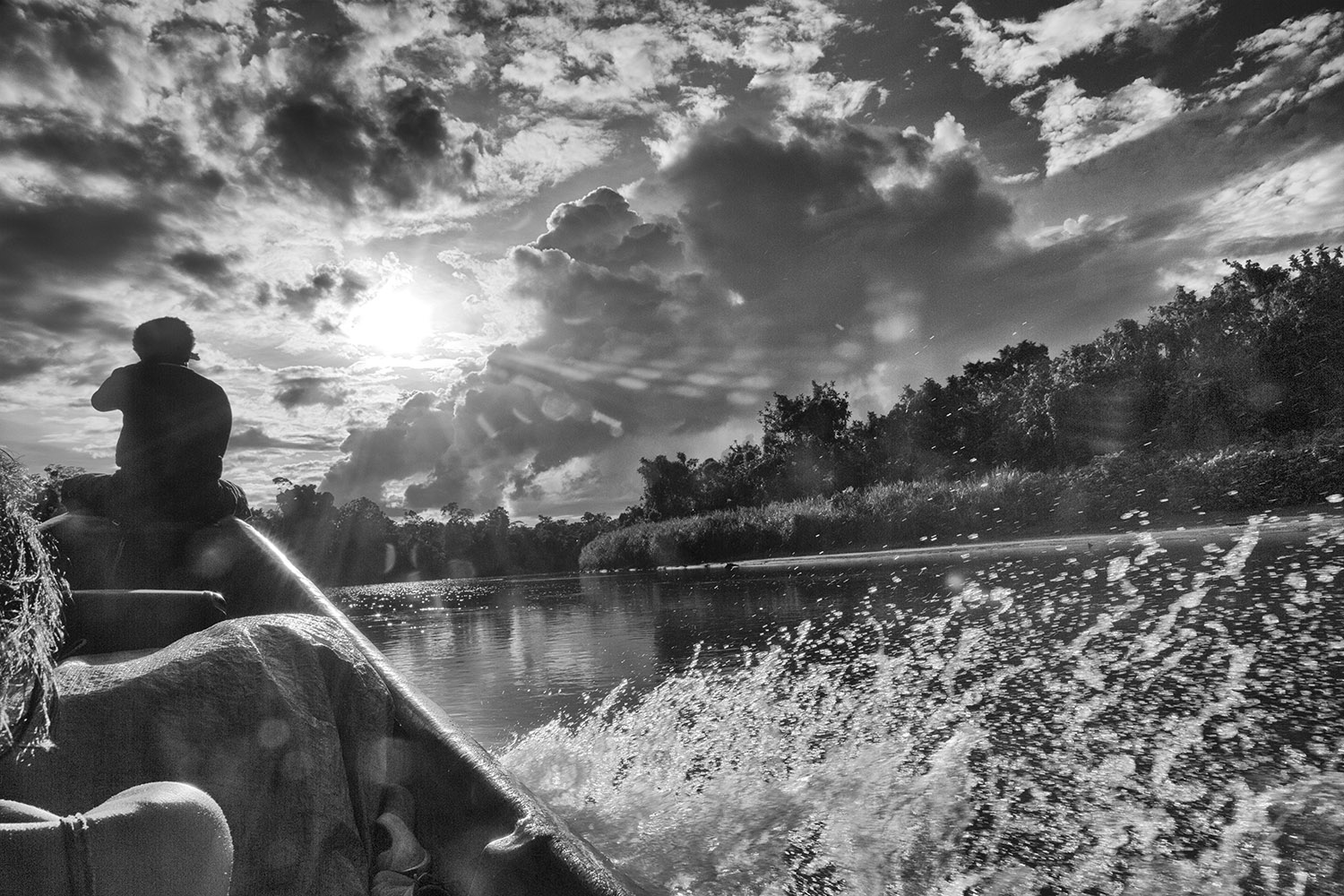
Because a flight out from one of the neary towns was simply not operating, we had to retrace our entire route to get back, going upriver, and then by jumps over to Papua New Guinea again by land, and then the flights to Morseby and from there to Honiara Solomon Islands again. By now we were quite worn down, so in the Solomons we simply visited Upei, a resort in the Marova Lagoon. When fishermen carvers brought their wares to sell at the resort, I canvased them with the coelacanth I.D, documents, but no takers. They didn't know the fish. So concluded SoPac IV. We basically learned several places coelacanths probably weren't!

